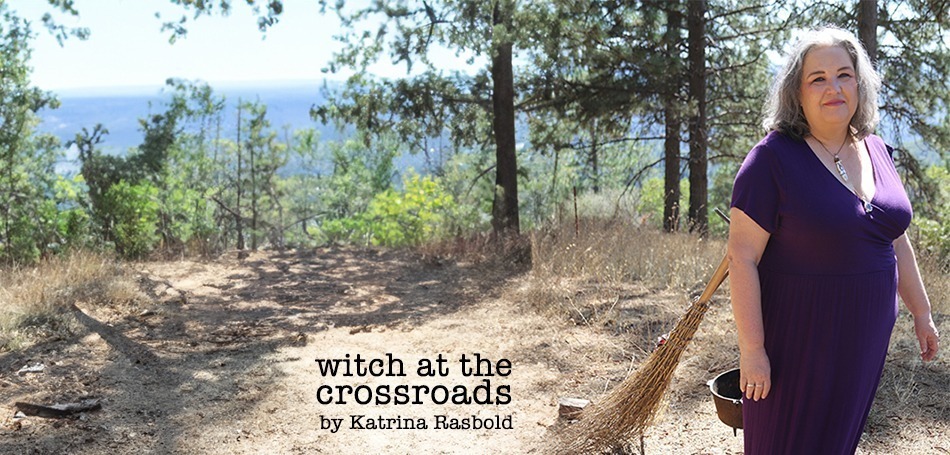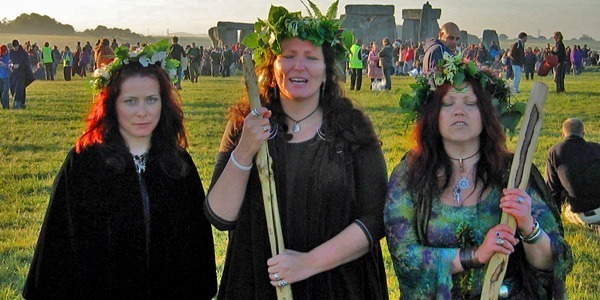
By Katrina Rasbold
Creating a new magical group is exciting, rewarding, and a ton of work. Often, particularly in eclectic work, the group forms spontaneously around a common desire to learn and practice more. Even in the most desirable circumstances, certain decisions must be made. This post takes you through some of the most vital points of forming your own spiritual group.
1) Will you embrace a particular spiritual path or be open to many different faiths?
This can be a loaded decision and usually falls to the interests of the leaders who are setting up the group. Does your group prefer working with people of the same faith or do they get excited about working with people who walk a different spiritual path, opening learning channels for discussion about different philosophies and traditions?
If you choose to work with people of varying faiths, it is good to clarify right away the commonalities of the different faiths in your group to establish not only spiritual unity, but also your nomenclature you will use. You want to make sure that the language that is employed is comfortable for everyone present, which will allow for greater focus on a common goal.
2) Will your group have a name?
This is not a necessary step, but many find that giving their group a name increases the sense of belonging. People like labels and enjoy knowing where their faith, time, and energy are being pledges. This decision opens the door of definition. Are you a clan? A circle? A church? A working group? A study group? An organization? A prayer group? These questions lead you into…
3) What is the objective of your group?
Will you be actively involved in the community or meet privately? Will you get together to raise energy toward the individual group members’ needs? Will you celebrate the cycles of the year together? Will your manifestations be short term (within the period between meetings) or long term (compounding of a period, such as a harvest cycle) or both? Is yours a social group, a working group, or a mixture of the two?
The creation of a magical group is a spiritual act in and of itself and one of the most important points of any spiritual act is defining the objective of the act. You must give that energy a place to go and, in this case, the energy is defined by the objective of what exactly you want your group to be and do both in the meeting place and in the world itself.
4) Is your group open or closed group?
Is your group “open” (meaning others can join along the way) or “closed” (meaning only those who are members can participate) or “open by invitation” (meaning members may invite people to participate)? There is power in always knowing who will be present for your spiritual meetings and never having to adjust to the energy of newcomers.
This establishes a certain feel of safety and predictability for the group members. On the other hand, a group that does not grow and evolve is a dead group. Members may eventually wish to include significant others, their older children, and close friends and new additions to the group shift the dynamics of the group in ways that can help us to learn and develop. Creating policy for the addition of new members creates a framework of understanding for these inevitable changes.
5) How often will you meet?
When you have a wonderful group session, it is natural to want to meet all the time to recreate that experience, especially if your life has been missing that sort of connection. In the “real world,” however, that is not always possible. It is important to tailor your expectations around the fact that people have families, jobs, and other obligations that could make it difficult to meet frequently.
Also, repeatedly working the energy can sometimes dilute the process. I recommend starting out with a goal of meeting once or twice a month and then adjusting as you go along. Determine what your objective is for each meeting and if the group feels that more (or fewer) meetings are necessary or feasible, remain flexible and adapt accordingly.
6) Where will you meet?
This is often a trickier proposition than it sounds. You want your meeting place to be centrally located so that members can get to it easily, but you also want it to be convenient for you. If you use tools or props for your meetings, it can be cumbersome to haul them around to a different meeting place.
If you are working with personal friends, having them come to your home is likely comfortable to you. If you are working from “cold calls” and people you have never met before will attend meetings, you might prefer to meet in a neutral location away from your home such as a park or a community center. Many facilities have rooms that they allow groups to use at no cost or low cost.
Regardless of where you choose, the area should be comfortable for sitting/standing for at least two to three hours and weather conditions should be accommodated. Being too hot, too cold, sitting in uncomfortable chairs, or standing for too long can slow down your energy movement.
7) What is the hierarchy of the group?
Is there one leader? A board of leaders? Is everyone equal in status to one another? Is there a graduated series of levels or positions? Although a democracy sounds wonderful on paper, it is generally agreed that within a group setting, having everyone working with an equal vote usually does not work. I highly recommend having appointed leaders to cast a deciding vote if necessary.
A friend of mine leads a group very effectively under the title of “First Among Equals”, which means that all within the group are considered equal, none greater than the other. If, however, a deciding vote is required, hers carries the weight. Leadership appointment can be determined through a voting process conducted by the group or by determination of experience.
The term of office may be permanent or for a specific time (such as a year and a day). Leadership can also be determined by “I am the one setting up the group; therefore, I am leader.” Do not presume hierarchy is understood by all. Spell it out to avoid confusion.
8) What about by-laws?
Right behind the decision of leadership comes the adopting of by-laws or guidelines. Although this may sound like an overthought formality for a simple spiritual working group, it eliminates future misunderstandings among members. Usually, either the entire group or the group’s leaders establish by-laws based upon their own spiritual and administrative experiences. They then edit by-laws as needed when future situations require the establishment of new rules.
As many of us know, groups often form ad hoc, springing up from nowhere when a tribe finds itself. Others come from one person’s decision to take their spirituality into a more social area. Regardless of how your group begins, take a few minutes to think it through or talk it through with others in the group you trust. Get a group consensus so everyone is on the same page and all the horses are pulling the cart in the same direction.
Want to join the conversation about this blog post? Go to the Green Egg Forum and scroll for the forum post that relates to this article: https://www.facebook.com/groups/1069823176940972
 Katrina Rasbold is a professional Witch, published author, priestess, and editor of Green Egg Magazine. She and her husband, Eric, are the creators of the CUSP spiritual path and owners of Crossroads Occult. She and Dahlia Rose host the popular livestreamed video broadcast “Crossroads of Cognizance” most Thursday afternoons. You can reach her through www.katrinarasbold.com.
Katrina Rasbold is a professional Witch, published author, priestess, and editor of Green Egg Magazine. She and her husband, Eric, are the creators of the CUSP spiritual path and owners of Crossroads Occult. She and Dahlia Rose host the popular livestreamed video broadcast “Crossroads of Cognizance” most Thursday afternoons. You can reach her through www.katrinarasbold.com.
